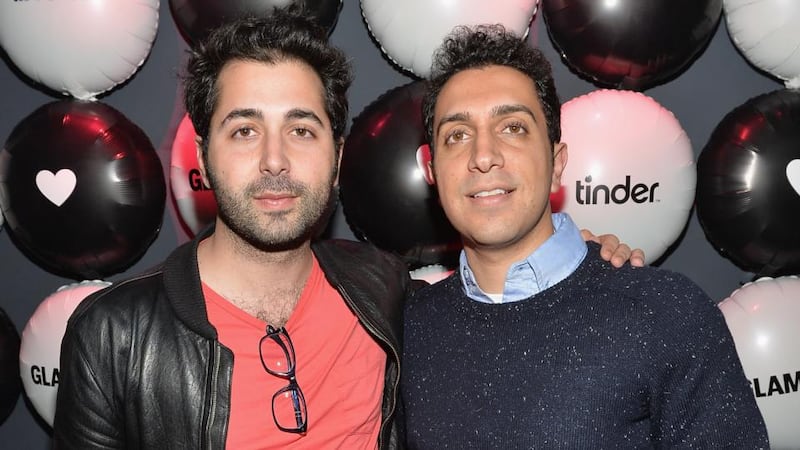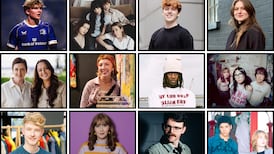Lisa had been on the Tinder smartphone app only a few weeks when she agreed to go on a date. Since returning from her travels she had found it difficult to meet people. She was also worried about her height. She felt reassured once her male suitor confirmed he was also 6ft tall.
“Generally when I go out I wear heels, and I’m always the tallest,” says the 26-year-old, who confidently arrived at the pub in Cork that evening to meet her online match. She was dismayed when the man who came up and introduced himself was at least a foot shorter than her. Lisa called her friend, made an excuse, and left.
“That’s the problem with Tinder,” she says. “It’s really deceptive. People can be great at banter in text messages, but then you meet them face to face and they’re like crickets.”

Lisa is part of the 6 per cent of Irish people who use Tinder, according to the US company behind the free iPhone and Android app, which uses Facebook photographs and details to match you with someone in your area.
Using it is a like using the Hot or Not app, and it can be addictive. After looking at up to six photographs, you have to choose whether to swipe right, for yes, or left, for no. If two users swipe right for each other they’re matched and invited to begin a conversation. And so love blossoms. Or does it?
Justin Mateen, the 27-year-old Californian who cofounded the company, says Tinder helps people overcome the "physical and emotional barriers" they are often faced with when meeting new people. As the app's tagline puts it: "Tinder is how people meet. It's like real life, but better."
“When you walk into a coffee shop or party, the first thing you notice about someone is their physical appearance; you’re either drawn to them or not,” says Mateen. “That’s how we present the profile. It’s the same experience but on steroids.”
Mateen and his childhood friend Sean Rad, who is 26, decided two years ago to create a social network that connected people in an "efficient and fun way". After joining up with Jonathan Badeen, a 32-year-old web designer and developer who had studied marketing, they focused on inviting "highly social people" to use the app, hoping the Tinder trend would trickle down through peer groups by word of mouth.
Once Mateen and his cofounders realised there was an appetite for easy-access smartphone dating in the US, they set their sights farther afield and within six months had translated the app into 24 languages.
The company has declined to release the number of accounts worldwide, but it claims that in some countries, such as the Netherlands, 10 per cent of the population is using Tinder. It also says men tend to use the app more often, with a male to female ratio of 55/45.
Today 51 per cent of users are between the ages of 18 and 24, 32 per cent are between 25 and 34, and 8 per cent are between 35 and 44. Even teenagers are getting involved: 7 per cent of users are aged between 13 and 17. Mateen emphasises that underage users can interact only with one another. “Facebook is great with data, and their ability to detect a user’s age,” he says. “We take extra measures to make sure all our users are protected.”
Tinder says users log on about 11 times a day for an average of seven minutes. “That’s 77 minutes of Tinder per person per day,” says Mateen.
He argues the app is not meant for hook-ups or one-night stands. “I use Tinder on a daily basis to form both friendships and romantic relationships,” he says, adding that Tinder can even be used to develop ties with distant family members.
Lying to themselves?
Irish users we speak to feel otherwise. "Tinder is not for making friends," says Seán Ó Sé, a 24-year-old from Kerry. "If people are using it to make friends they're definitely lying to themselves." Ó Sé, who signed up four months ago, calls the app vain and one-dimensional. "You walk into a busy bar in Dublin, scan the room and make your judgment in the first 30 seconds of who you would like to approach," he says. "Tinder is just like that: you flick through and say yes or no."
Ó Sé has been offered a one-night stand through Tinder more than once. “It’s usually 1am on a Saturday night, and they send a message saying things they probably wouldn’t say in the morning,” he says. “It’s just like when you’ve had a few drinks and text someone.”
Anthony O’Brien, a 32-year-old who met his girlfriend through Tinder, signed up more than a year ago. He says using the app makes it a lot easier to strike up a conversation with somebody of the opposite sex.
“I would be one of those people who stays with his friends in a bar and wouldn’t venture over to a girl,” he says. “I’d need a few drinks to go up and chat to her. With Tinder you can take your time texting her and thinking about what you’re going to say. Girls would prefer to be brought out on a date through Tinder rather than meet a guy slurring his words in a bar.”
But O’Brien is aware that a stigma might attach to couples who meet through Tinder. “You think people might judge the relationship, given you met online,” he says.
Before he met his girlfriend O’Brien found himself in an awkward position when a young woman asked him to send intimate photographs of his body. “We’d only been chatting a day or two,” he says. “I didn’t send them, because you don’t know who you’re talking to.”
Mark, a 25-year-old actor living in Dublin, signed up because he found the concept hilarious. “It was just for the banter. I had no intention of actually meeting these girls,” he says.
Spotting friends
Unlike users in vast anonymous cities, such as London or New York, Irish users often come across close friends on Tinder. Mark says he saw at least 15 people he knew when he was using it. He also took screenshots of the more brazen profile photographs he encountered.
“Here’s a girl wearing no clothes,” he says, holding out one of a young woman posing with strategically placed paper flowers .
Mark deleted the app after realising how addictive it can become. “Originally I said I’d keep Tinder for two weeks, but I kept it for five months.”
Rachel, a 25-year-old stylist from Dublin, says she was reluctant to sign up when her friends suggested it. “I’m not a believer in dating websites, and before I joined I thought it was a sex hook-up site,” she says.
She often wondered whether someone was talking to her just for sex. “I had one guy who was a bit gross and vulgar. He instantly started being weird and using sexual language, so I blocked him.”
Rachel says a lot of her friends prefer to chat on Tinder rather than actually go on a date. “When you’re bored during the week you have someone to text. Others say it’s great for your ego.”
Lisa also enjoys chatting with matches. She says she has encountered a varied selection of profiles, including one half-naked man who called himself S&M who borrowed his tagline from Fifty Shades of Grey: "Will you be the Anastasia to my Mr Grey?"
She still uses the app even though she now has a boyfriend. “I don’t expect him to shut his down, either,” she says. “When I’m on the bus I sometimes use it. You know, to keep my options open.”
Some names have been changed










